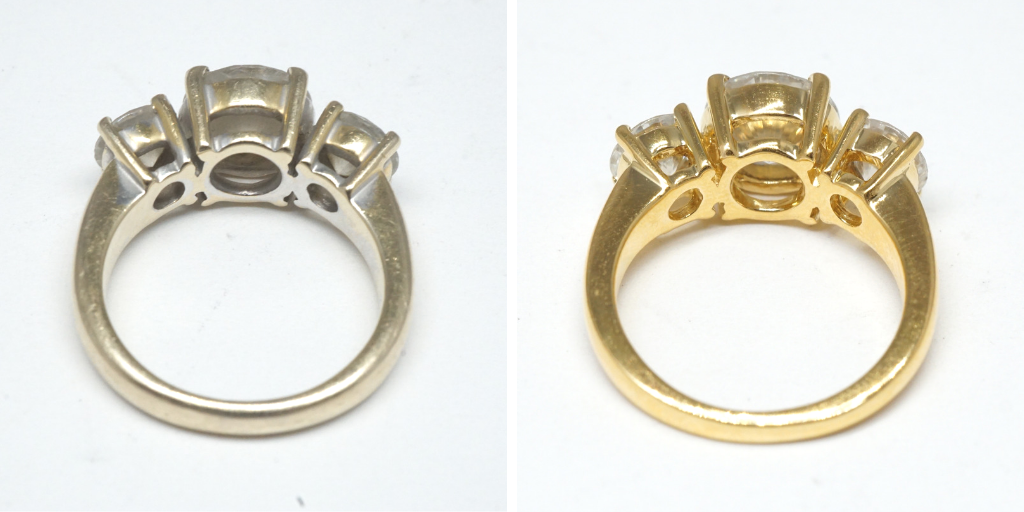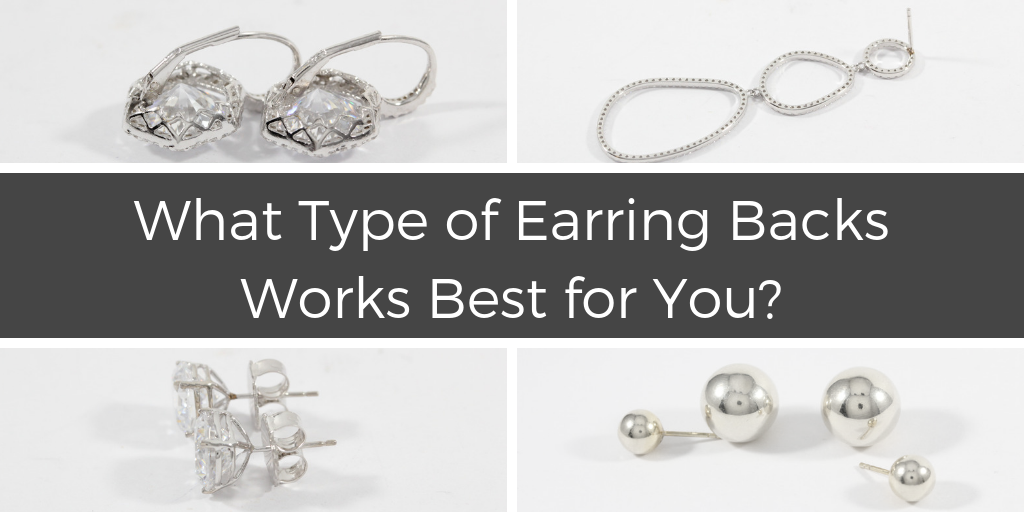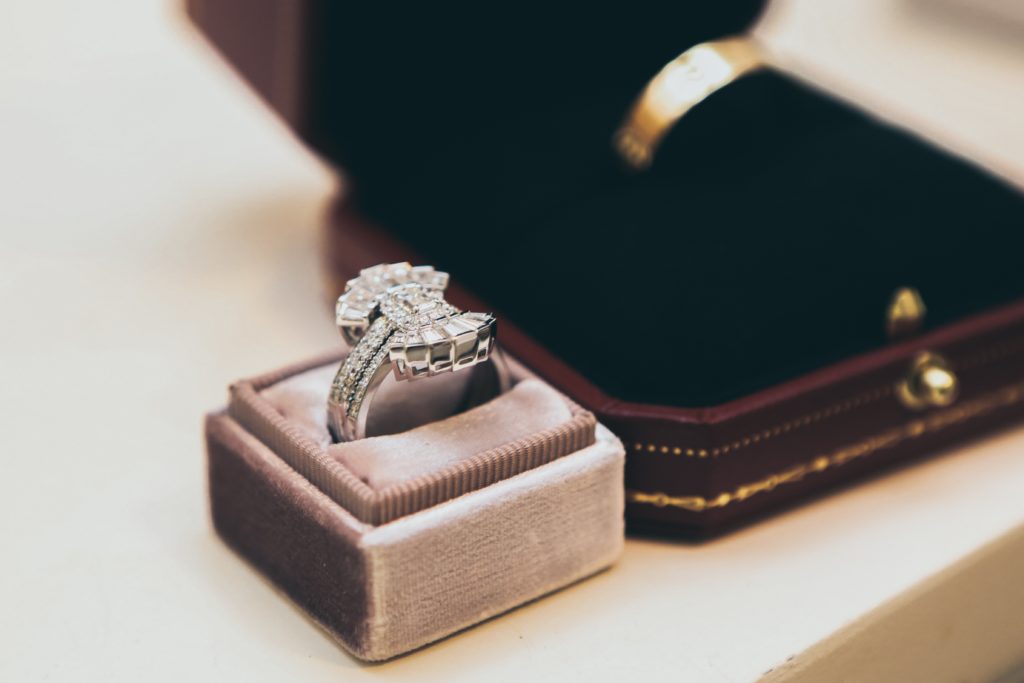Developed A Jewelry Metal Sensitivity? Here’s What You Need To Know
Written by Kira Garrett
April 26, 2021

If you’ve got allergies on the mind, you’re not alone! Spring is here, and seasonal allergies can make other sensitivities like jewelry or metal sensitivities act up too. Here’s what you need to know about metal sensitivity, how to make the most of your existing jewelry collection, and tips for choosing the best jewelry for sensitive skin.
What Happens When You’re Having A Jewelry Allergy Reaction?
While everyone reacts to metal sensitivities differently, there are some symptoms to watch out for. Itching, redness, swelling, soreness, and warmth at the exposed area are all signs that you’re allergic to the metals in your jewelry.
With that said, symptoms likely won’t show up straight away. It can take a day or two for a rash to develop or soreness to start! This can make it tricky to pinpoint jewelry as the cause.
Are You Allergic To Your Jewelry?
You can’t be allergic to jewelry in general. What’s actually happening is a reaction to one of the materials used to make your jewelry. And it’s quite common! For example, up to 20% of people are allergic to nickel. And nickel certainly isn’t the only metal that causes allergies; many people also have reactions to:
- Copper: While this metal isn’t often used on its own in jewelry designs, it is one of the metals in rose gold. So if your favorite rosy-colored ring is giving you a rash on your finger, copper might be the culprit.
- Brass: This metal is frequently used to make affordable, fast-fashion jewelry, but brass is actually an alloy, meaning a mixture of metals. Can you guess which metals are included in the mix? Copper and nickel, the two most common to cause an allergic reaction! If you have a sensitivity to either, steer clear of brass.
- Alloys: Speaking of alloys, there are numerous metal combinations that can cause flare-ups. As you might have guessed, this is because many alloys include problematic metals like nickel and copper.
What Should You Do If You Have A Jewelry Metal Sensitivity?
Of course, take care to manage your symptoms and seek medical help if you think you’re experiencing an allergy. It’s possible that the rash you’re feeling is your body’s response to chafing or moisture trapped under your ring, for example. You should get tested by a professional to confirm that you are in fact allergic to a particular metal before you start making changes to your jewelry collection. Here are some other things you can try to alleviate your symptoms at home:
Get Your Jewelry Tested For Metal Makeup
If it’s tough to determine which piece—or pieces—of jewelry you’re reacting to, get them tested! Some jewelry makers won’t necessarily mention lesser metals included in alloys, so the only way to know for sure is to run a metal test. Quick Jewelry Repairs offers a metal testing service; simply send in your piece and we’ll assess what materials are present.
Keep Your Jewelry Clean
Spring cleaning is a great way to bust the dust in your home and get your space in tip-top shape, but while you’re at it, spring clean your jewelry collection too! It’s always a good idea to sanitize each piece after you wear it, but pay extra attention to cleanliness if you’re having an allergic reaction. Bacteria and debris can build up on your jewelry and cause discomfort and irritation.
- Use a gentle detergent that won’t further aggravate your allergy.
- Dry your clean jewelry thoroughly.
- Store your jewelry in a clean, covered area between wears.
For the ultimate spring cleaning, send in your jewelry for spa service. We’ll treat each piece to a deep steam clean, stone tightening, and polish.
Makeover Your Jewelry
If you’re devastated to learn that your favorite necklace is causing an allergic reaction, all is not lost. There are several things you can do to continue wearing each piece in your collection.
- Get it plated: Adding a thick layer of hypoallergenic metal on top of a base metal can help cushion your sensitivity. Rhodium is a popular choice for plating because it’s nickel-free and durable.
- Reset the stones: If you love the gemstones in jewelry but are having a reaction to the metal settings, you can reset the stones with a new metal that doesn’t bother you. Resetting your gemstones makes for hypoallergenic jewelry you can wear without worrying.
- Use it in a new way: Turn your favorite pendant or pair of earrings into a pin. This way you’re able to add the pin to a lapel or a handbag, and it’ll never touch your skin. Get creative! There are lots of ways to utilize jewelry that are contact-free.
What To Keep In Mind When Shopping For Hypoallergenic Jewelry
If you have a metal sensitivity, there are some things to look for when shopping for new jewelry. Of course, avoid the metal that’s causing the issue, and ask the jewelry designer for a full list of materials before making your purchase. Here are some additional tips:
Don’t Compromise on Quality
One of the most common reasons manufacturers use nickel or copper alloys is to make their jewelry affordable. Fast fashion and costume jewelry frequently feature alloys made up of less valuable metals. In general, it’s a good idea to look for fine jewelry options that feature higher quality metals like:
- High Karat Gold: The higher the karat, the purer the gold. Anything above 14K is typically safe for those with a jewelry metal sensitivity.
- Platinum: If you prefer silver-colored jewelry, platinum may be the metal you’re looking for. Yes, it’s expensive, but it’s also 95% pure and doesn’t contain nickel or copper.
It's always important to get a full list of jewelry’s metal make-up before you commit to purchasing a piece so you catch any exceptions or sneaky alloys.
Check all the Details
Every last piece, part, bead, and bauble on your jewelry could cause a reaction if it’s made with a metal you’re sensitive to. Clasps, spacers, and other findings are often made with different materials than the rest of a piece of jewelry, so pay close attention. Look for jewelry that’s 100% hypoallergenic, including the clasp, jump rings, and bead caps.
Be Cautious With Leather
Leather may seem like a harmless material, but it can actually contain trace amounts of metal that could cause you to react. While cowhides are stretched and compressed during the tanning process, heavy-duty machinery can leave behind trace amounts of metal. Exercise caution when considering a new leather watch band or strappy bracelet. Or, to be totally certain you won’t have an allergic reaction, opt for vegan leather instead.
For Body Jewelry, The Material Matters Even More
Certain areas of skin are more sensitive than others. An earring pierces directly through your ear. The same idea goes for nose and belly button rings, or anywhere you have a piercing! These areas are the most likely to have a severe reaction when you have a jewelry metal sensitivity. It’s extra important to select body jewelry that’s safe for you. Double-check the materials in your body jewelry, like the post and back of an earring for example.
We hope these tips come in handy if you’re experiencing a jewelry metal sensitivity or are just starting to suspect you’re allergic. It’s easy to make your jewelry collection allergy-friendly again with some cleaning, care, and attention. Plus, there are more hypoallergenic brands to choose from than ever before.



If there is a piece I really like that has nickel in it, I spray it with clear polyurethane or if it is a small piece or earring posts, I coat it with clear nail polish and have no more problems.